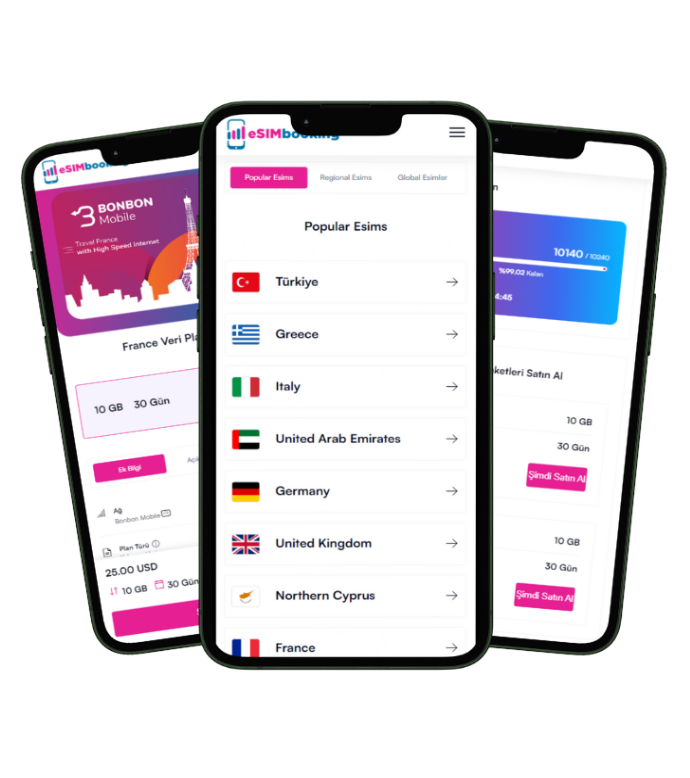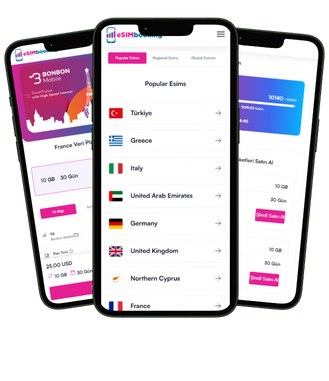E-SIM Technology: Your Future in Mobile Communication and Travel
In mobile communication, users have various SIM card options tailored to their needs and preferences. Local SIM cards are the most cost-effective choice for usage within a specific country. On the other hand, international SIM cards offer convenience for travelers but often come with higher costs. E-SIMs, however, act as a virtual replacement for physical SIM cards, allowing users to switch between operators quickly and effortlessly.
When deciding between these three types of SIM cards, factors such as coverage area, cost, and user-friendliness should be considered to make the right choice.
What Makes E-SIM Unique?
E-SIM represents a revolutionary leap in mobile communication. Unlike traditional SIM cards, it is a digital SIM embedded in your device. This eliminates the need to visit a store to get a new SIM card, enabling instant operator switches right from your device.
- Key Advantages of E-SIM Technology:
Ease of Travel: Ideal for frequent travelers, E-SIM enables seamless transitions between plans that cover multiple countries or regions. - Multiple Numbers, One Device: Manage both personal and work numbers on a single device effortlessly.
Wearable Device Compatibility: Since no physical card is required, E-SIMs can be used in smartwatches and fitness trackers, enhancing connectivity options. - Enhanced Security: With no physical SIM card to misplace or steal, E-SIM provides a higher level of security.
By offering a blend of flexibility, convenience, and advanced technology, E-SIM is redefining mobile communication and elevating the user experience.
Coverage Area Comparison: Local SIM, International SIM, and E-SIM
SIM card types differ significantly in terms of their coverage area:
- Local SIM Cards: They offer the best coverage within a specific country by leveraging local operators. However, when traveling abroad, these cards may cause high fees and inconsistent connectivity issues.
- International SIM Cards: These cards work across multiple countries and regions, offering broad coverage for travelers. However, they often lack the speed and quality of local operators and come at a higher cost.
- E-SIM: With digital technology, E-SIMs can store multiple network provider profiles on the same device. They enable access to local rates even when traveling abroad, making communication both cost-effective and comprehensive.
E-SIM’s adaptability offers a modern and practical solution to coverage and cost challenges, especially for international communication needs.
Cost Comparison: Local SIM vs. International SIM vs. E-SIM
The costs of local, international, and E-SIM cards are determined by your communication and travel preferences:
- Local SIM Cards: Generally, local SIM cards are the most budget-friendly choice, thanks to attractive rates from local operators. However, their cost-effectiveness diminishes due to high roaming fees when used abroad.
- International SIM Cards: These cards are designed to work across multiple countries. While convenient for short-term trips, they often carry higher rates and can become costly during extended travel periods.
- E-SIM: E-SIMs stand out by providing users with the ability to compare costs across different providers easily. This flexibility ensures economical pricing and better cost management:
For long-term travelers, E-SIM is a cost-efficient option that combines simplicity and savings.
Why E-SIM is the Right Choice for Travelers and Everyday Users
E-SIM technology is revolutionizing mobile communication, combining the affordability of local SIM cards with the accessibility of international SIM cards. Its digital-first approach offers unparalleled convenience and flexibility, making it a top choice for modern travelers and busy professionals alike.
Whether you prioritize coverage, cost, or ease of use, E-SIM is a future-ready solution that can transform the way you stay connected at home or abroad.


